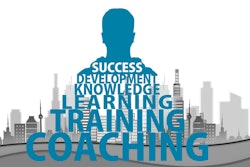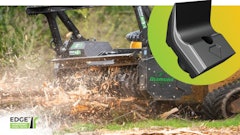
Listen to the lively podcast on this subject!
In Part 1 of this series, we discussed how important brand is to not only attract customers, but also the right people, to your organization. It is more than an exchange of talent for money. It’s important how the business’ reputation reflects on them, whom they work with and if they can contribute.
Part 2 discussed job requirements and turned the conversation inward to defining positions. The starting point was every position must be linked to a process. For example, if a new hire works on the design/build installation crew, what part of the process is their responsibility? It is difficult to perform when the what is not clear and there is no how it is measured. All of this leads to identifying what knowledge, skills and certifications are required for success.
Start backward with certifications-what must new hires have to qualify? It could be as general as a valid driver’s license or as specific as being a certified arborist. When building a list of behaviors required for the position, focus on the physical activity and tools used. This offers a clear picture of the performance needed. Only then tackle knowledge or what they need to know. Unless there is something critical like safety, spend the least amount of time on knowledge. You can assume they have it if the skills are present until there is evidence otherwise.
Working through the certification, skill and knowledge demands defines the requirements for eligibility-what the crew member must do or know to be eligible for hire. Eligibility is 50 percent of the hiring criteria and the focus this month. A future article will focus on suitability-in other words, just because candidates are eligible for the job does not mean they should work for you.
Eligibility is easier to decide and can be handled without having a one-on-one with the job candidate. If your ad copy is written well, with a blend of job requirements and company culture, you can screen the candidates quickly.
Why spend any of your precious time talking or meeting with someone you will not hire? Instead ask for a written resume that answers:
- The Question of Match. Ask candidates to give a list of their certifications, what they know and where it was practiced, and any education or training you consider important. Tell them to keep this to one paragraph. Remember you want to read it and be able to place them into one of three piles-yes, no and maybe.
- The Question of Character. Their work history says much about them. If they are 25 and applying for their first job-why? If their history has them changing jobs every few months or multiple jobs over the past few years-why? This is the second paragraph on their resume. Ask them to list both why they took each job and why they left. You are trying to decide if there is a pattern of trading time for money until a better deal comes along.
- The Question of Intent. This is the closing paragraph. Why are they responding to this offer and what do they expect? Don’t be too harsh on their answers. Since they never worked for you, or maybe this is their first time in the industry, realistic expectations are impossible. What you are trying to decide is how wide the gap is between what they expect and reality. If this individual has everything else going for them, at least you know the first issue to address-closing the gap with reality.
This three-paragraph resume will force them to give the information you need, not a laundry list. You can sort it into the yes pile or people to interview, the no pile or people to avoid, and the maybe pile or people to interview because they might fit another position.
In the next part of the series, we will tackle writing tight ad copy that will attract the people you can build a future around.
GreenMark Consulting Group’s unique three-pronged approach to coaching appeals to landscape and snow companies of all shapes and sizes from around the country. Regardless of which phase your company is going through, GreenMark’s offering of business toolkits, virtual coaching, live business boot-camp workshops and deep-dive one-on-one consulting can provide the insights and direction your company needs to thrive. Please visit greenmarkgroup.com for more information.



















